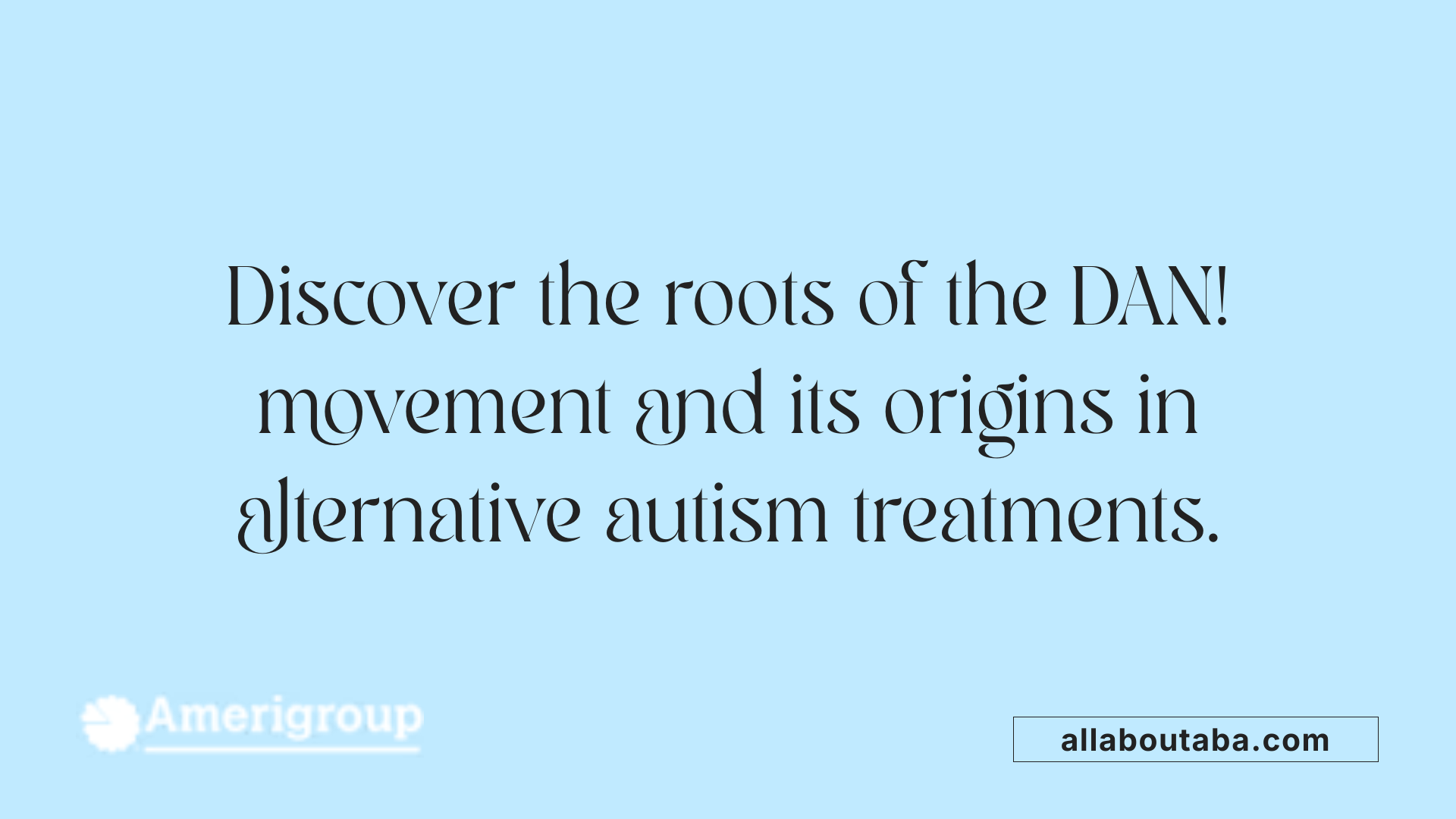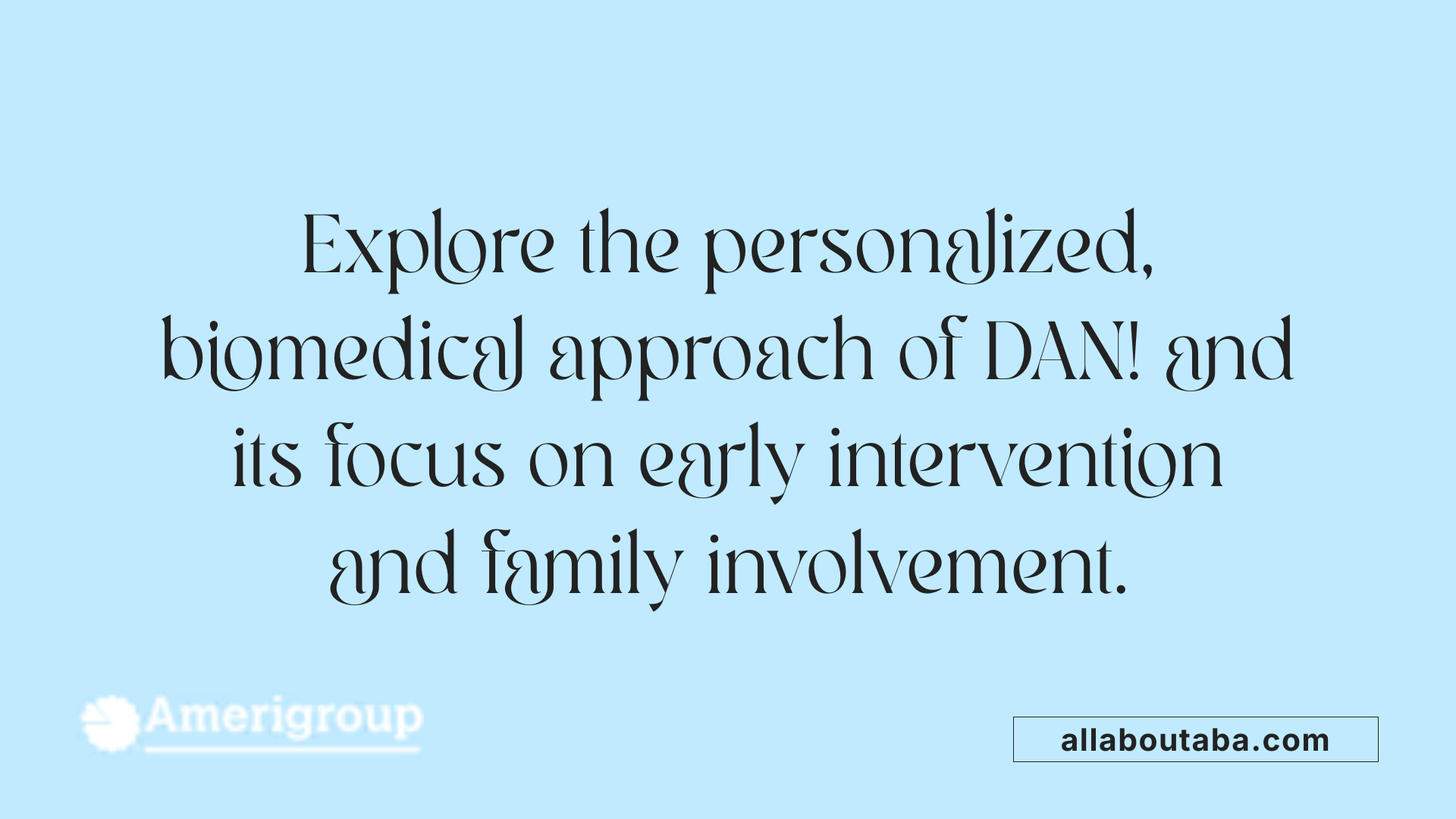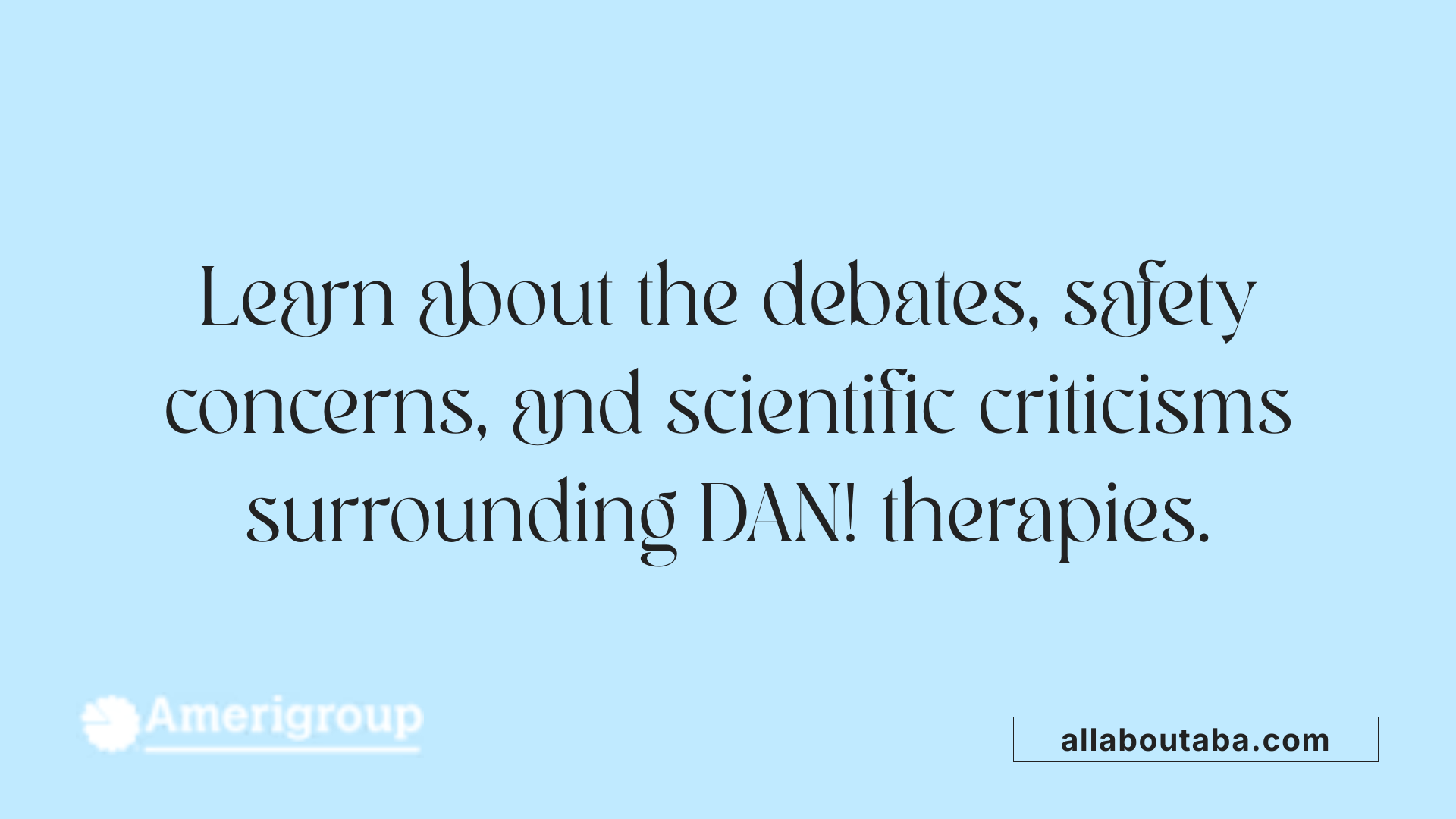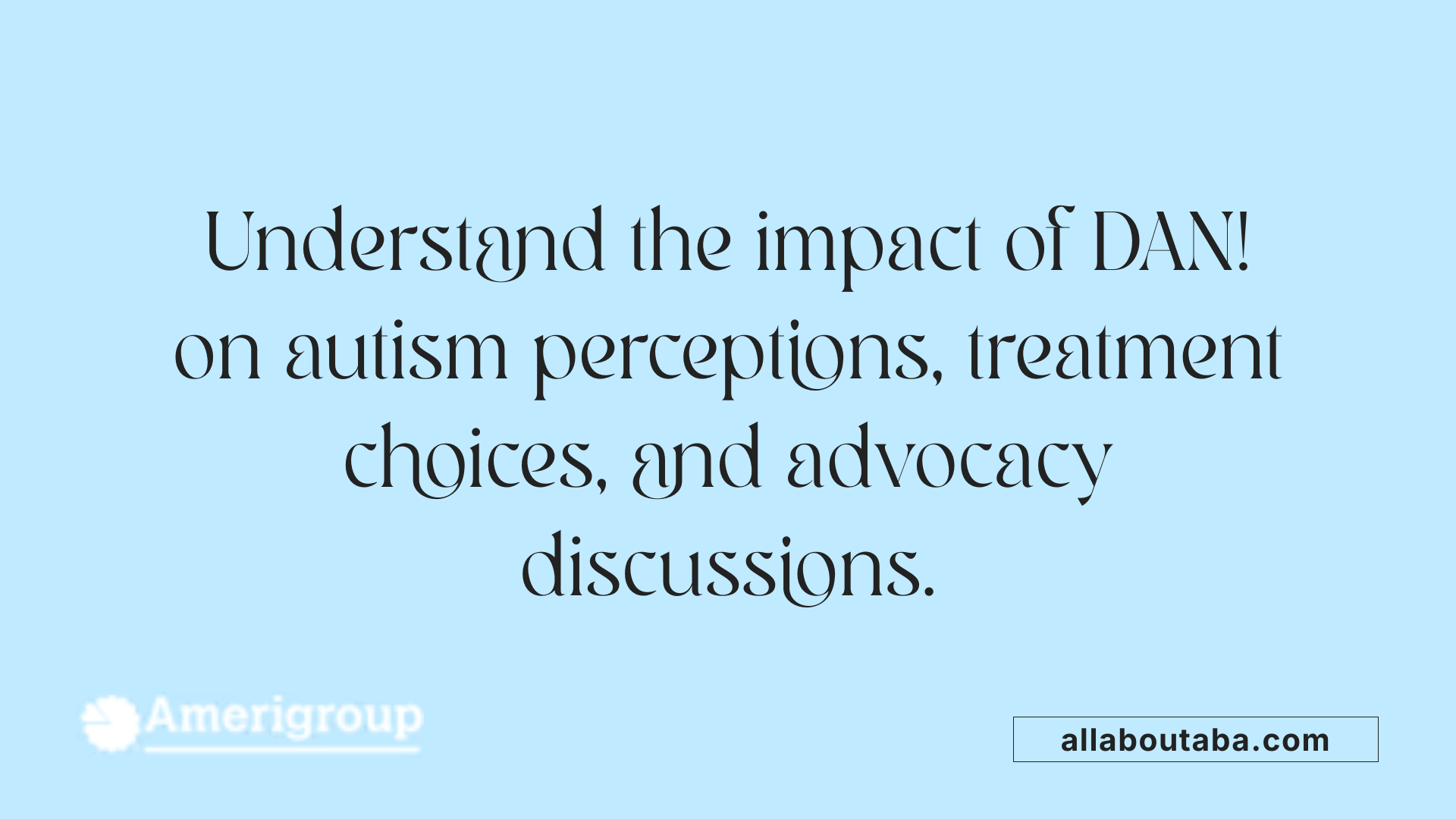Understanding DAN! and Its Role in Autism Treatment
The Defeat Autism Now! (DAN!) movement emerged in the mid-1990s as a pioneering effort to explore biomedical and alternative treatments for autism. Initiated by the Autism Research Institute, DAN! sought to identify effective interventions aimed at addressing the medical underpinnings of autism rather than just managing symptoms. Its emphasis on personalized, biomedical protocols has sparked both support and controversy, significantly influencing autism treatment debates and advocacy.
Origins and Historical Background of DAN!

What is the historical background and origin of the DAN! movement?
The Defeat Autism Now! (DAN!) movement emerged in the early 1990s as a reaction to the rising awareness of autism and the perceived limitations of traditional medical approaches. It was initiated by a group of physicians, researchers, and parents who sought alternative and biomedical treatments to address the complex needs of children diagnosed with autism.
This movement was largely motivated by dissatisfaction with conventional therapies, which many felt did not fully address the underlying causes of autism or improve outcomes sufficiently. Instead, they looked toward experimental, nutritional, and holistic approaches, believing these methods could better support affected individuals.
The development of DAN! was influenced heavily by the leadership of Dr. Bernard Rimland, a notable autism advocate and psychologist. Rimland’s advocacy and research played a crucial role in shaping the movement’s philosophy and approach. The broader autism advocacy community of that time also contributed, emphasizing the importance of parental involvement, early intervention, and a holistic view of autism.
The DAN! Project operates as a coalition that emphasizes a specific protocol for diagnosis and treatment, which includes extensive assessments and targeted biomedical interventions. Over time, the initiative grew to include a directory of healthcare professionals committed to these approaches.
While the name "DAN" coincidentally shares a name with an ancient ethnic group from West Africa, characterized by rich cultural traditions and histories, the modern DAN! movement is primarily focused on advocating for alternative autism treatments. Its roots are firmly planted in efforts to find better therapeutic options rather than cultural or historical origins.
Today, DAN! serves as a platform for exploring non-traditional treatments, although these interventions often lack broad scientific validation. It encourages dialogue between families, clinicians, and educators to objectively evaluate what works best for individual needs.
Below is a table summarizing the development aspects of the DAN! movement:
| Aspect | Description | Additional Context |
|---|---|---|
| Origin | Started in early 1990s | Developed by physicians and parents seeking alternatives |
| Motivations | Dissatisfaction with conventional treatments | Focused on biomedical and nutritional approaches |
| Influences | Dr. Bernard Rimland and autism advocacy groups | Emphasized parental involvement and holistic care |
| Objectives | Promoting specific diagnosis and treatment protocols | Includes listing supportive practitioners |
Understanding the origins of DAN! helps elucidate its role in the landscape of autism treatment approaches, balancing innovative efforts with the need for scientific validation.
Core Principles and Methodologies of DAN!

What are the core principles and methodologies promoted by DAN! practitioners?
The Defeat Autism Now! (DAN!) Project, initiated in 1995, advocates for a personalized and biomedical approach to treating autism. Its core principles emphasize developing individualized treatment plans that often include specialized diets, nutritional supplements, and detoxification procedures. These interventions aim to address underlying physiological factors believed to contribute to autism.
DAN! practitioners prioritize early intervention and proactive strategies. The goal is to implement therapies and treatments as early as possible to potentially improve developmental outcomes. This approach reflects a focus on actively addressing health issues before they become more difficult to manage.
Family collaboration is at the heart of DAN!. Practitioners encourage open communication with families and educational professionals to determine what treatments work effectively. Objective assessment of these interventions is essential to verify their benefits and to adjust strategies as needed.
Although the scientific validation of many DAN! protocols remains incomplete and diverges from mainstream guidelines endorsed by organizations like the American Academy of Pediatrics, the approach underscores the importance of personalized care. It promotes empowering families to be active participants in selecting therapies that align with their children's needs.
In terms of communication strategies, DAN! principles share similarities with Motivational Interviewing (MI). Both approaches advocate for empathy, respecting family autonomy, and supporting motivation. This patient-centered communication fosters better engagement, addressing resistance with understanding and nurturing self-efficacy.
In summary, DAN! promotes a philosophy of early, individualized biomedical treatments, combined with supportive communication that encourages family involvement and collaborative decision-making.
Controversies and Scientific Evaluation of DAN! Interventions

What controversies and scientific criticisms have been associated with DAN! interventions?
The Defeat Autism Now! (DAN!) Project has attracted considerable controversy within the medical and scientific communities. Founded in 1995 by members of the Autism Research Institute, DAN! promotes a specific set of biomedical and alternative treatments aimed at managing autism spectrum disorder.
However, a major concern stems from the lack of robust scientific evidence endorsing many of the interventions suggested by DAN!. Systematic reviews have highlighted that the treatments often do not have strong backing for their safety or efficacy. For instance, some protocols involve the use of experimental medications or restrictive diets that lack thorough scientific validation.
Critics argue that many DAN! approaches diverge significantly from guidelines set forth by established health authorities like the American Academy of Pediatrics. These approaches often rely on unproven therapies and, in some cases, involve punitive measures rather than supportive care.
Safety concerns are also prominent. Reports have emerged of treatments that may cause harm, especially when administered without proper oversight. Additionally, interventions like forced labor or detention in some settings raise severe human rights issues. International bodies, including UN-affiliated organizations, have condemned such practices, calling for the closure of detention centers that prioritize punishment over evidence-based treatment.
Overall, while DAN! advocates for numerous interventions, the scientific community emphasizes the importance of evidence-based care. Families are encouraged to discuss all proposed treatments with their healthcare providers to ensure safety and efficacy.
| Aspect | Details | Additional Notes |
|---|---|---|
| Scientific backing | Lacking for many interventions | Concerns over safety and effectiveness |
| Human rights | Reports of forced labor, abuse, detention | International denouncement |
| Treatment approach | Unproven therapies, punishment-based methods | Diverges from accepted medical standards |
| Recommendations | Consult with healthcare providers | Emphasize evidence-based and voluntary treatment |
This ongoing debate underscores the importance of rigorous scientific validation and human rights considerations in autism treatment approaches.
Biomedical Treatments and the Broader Autism Treatment Context
What is the role of biomedical and alternative therapies within the DAN! movement?
The Defeat Autism Now! (DAN!) project, established in 1995 by members of the Autism Research Institute, emphasizes the importance of biomedical and alternative therapies in autism care. These approaches focus on addressing what DAN! practitioners perceive as foundational medical causes of autism rather than just treating symptoms.
Within this movement, therapies such as nutritional adjustments, dietary modifications, detoxification processes, and supplementation are central components. The goal is to support the physical health and self-regulation capabilities of individuals with autism. This integrated approach encourages combining these alternative therapies with conventional medical practices for a more complete, holistic treatment plan.
DAN! advocates for personalized treatment strategies and promotes collaboration among families, healthcare providers, and educational professionals. Such cooperation aims to identify and utilize treatments that are objectively effective for the individual.
It's important to note that although the DAN! approach aligns with principles of integrative medicine, many of the interventions are still under scientific review. Support and validation for some therapies are incomplete, and they often differ from those endorsed by standard organizations like the American Academy of Pediatrics.
Seeking a balance between innovation and safety, DAN! encourages families to discuss any new or alternative treatments with their primary care providers. The movement also provides a list of healthcare practitioners who support these approaches, fostering a network for safe implementation. Overall, biomedical and alternative therapies within DAN! aim to create a comprehensive, tailored approach to autism treatment, emphasizing safety, efficacy, and the patient's holistic well-being.
Influence on Autism Advocacy and Treatment Debates

How does the DAN! movement influence autism advocacy and treatment debates?
Since its inception in 1995, the Defeat Autism Now! (DAN!) Project has had a notable impact on how autism is perceived and treated. By promoting a range of biomedical interventions, such as dietary changes, supplements, and chelation therapy, DAN! has encouraged families and clinicians to explore non-traditional approaches aimed at reducing autism symptoms or improving quality of life.
However, the scientific backing for many of these interventions remains incomplete and often diverges from the recommendations of established medical institutions like the American Academy of Pediatrics. Despite this, DAN! emphasizes close collaboration between families and healthcare providers to identify effective treatments through objective evaluation.
The movement also plays a significant role in shaping public perception. It emphasizes early diagnosis and intervention, often positioning autism as something to be treated or cured. This stance has contributed to ongoing debates within the autism community, particularly between advocates of biomedical treatments and those aligned with the neurodiversity movement, which views autism as a natural variation of human experience.
While DAN! has succeeded in raising awareness around certain biomedical options, it has also intensified polarization. Supporters highlight hope for improved outcomes, whereas critics express concerns about the safety and scientific validity of some interventions. Overall, DAN! continues to influence the discourse, steering attention toward biomedical research while also prompting broader discussions on acceptance and support for autistic individuals.
The Evolving Landscape of Autism Treatment
While the DAN! movement has played a pivotal role in shifting focus toward biomedical and alternative approaches to autism, it remains a complex and controversial component of the broader autism treatment dialogue. Critics highlight the need for more rigorous scientific validation and respect for the rights of autistic individuals, advocating for a balanced approach that prioritizes safety, evidence, and acceptance. As autism awareness continues to grow, the influence of DAN! underscores the importance of integrating scientific rigor with compassionate, individualized care to support all facets of autistic well-being.
References
- Use of complementary and alternative treatments for children with ...
- Defeat Autism Now! – DAN!
- THE EFFECTIVENESS OF COMPULSORY DRUG TREATMENT
- Evidence-Based Complementary and Alternative Medicine in ...
- Introducing Complementary and Alternative Therapies - PMC
- Complementary and Alternative Medicine (CAM) - NCI
- 'It can do no harm': Body maintenance and modification in ...
- Direct Action Network - Wikipedia
- Milestones in the American Gay Rights Movement - PBS







